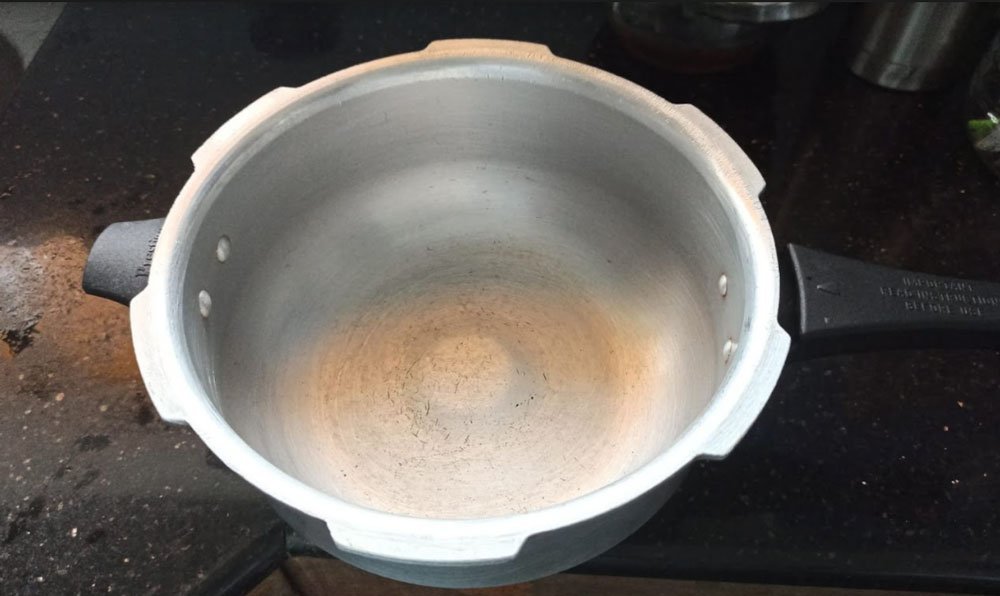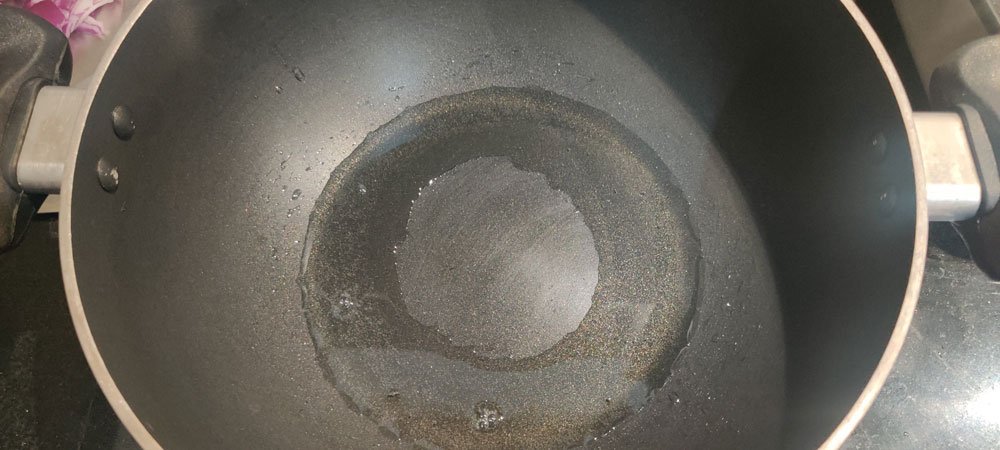Wobbling pans? Oil pooling to a side? Bulged bottom? Does these sound familiar to you? Then, you have got a warped cookware.
Warping is one of the common problems you face with your everyday cookware. The causes are many and we talk about them in detail later. But first, let us understand what a warped pan means.
Warping occurs mainly due to rapid heating and cooling down of cookware resulting in bulged bottom and wobbly base that doesn’t sit properly on the burner. As a result, the cookware doesn’t get heated evenly. A wobbly base could also mean you can’t use them on an induction stove. Moreover, with bulged bottoms, oil could pool to one side. So, you end up using a lot more oil than is necessary.
Though it can happen to any cookware with a flat base, you find it commonly in frying pans and baking sheets. But that being said, certain materials are more prone to warping than others.
Science Behind Warping
As mentioned, warping occurs due to the rapid heating and cooling of cookware.
To get science-y about it, extend of warping depends on thermal conductivity and coefficient of thermal expansion. To take you back to your high-school science, thermal conductivity refers to how well or poorly the metal can transfer heat. Aluminium and copper have high thermal conductivity, while wood, bakelite, stainless steel and such material used as handles in cookware have a low thermal conductivity.
The coefficient of thermal expansion refers to how much the metal expands when heated. Aluminium and copper comparatively expand more than stainless steel and iron.
As you know, metal expands on heating and contracts on cooling. When the heating or cooling is rapid, all molecules don’t expand and contract at the same rate. Hence, it results in warping.
Bulging often occurs because the area touching the burner would remain hotter for longer compared to other parts of the cookware. As a result, when the pan cools down unevenly, the centre along where the burner touches the pan bulges.
Related reading: Stainless Steel Is Safe. But Not If You Do This.
Causes of Warping

Now that you have understood the science behind warping, let us explore everyday actions that can result in warping.
You may also like our article on Best Air Fryers In India
Plunging Hot Pan Into Water
A major cause of warping is thermal shock. When metal that is hot and thus in an expanded state is suddenly cooled by plunging into the water, the metal molecules at the surface contract suddenly, but the molecules inside don’t. This tension causes warping and sometimes may even cause cracks in the metal.
In a bid to save burnt food, homemakers often plunge piping hot pans in water. But this could damage the pan in the long run. You could rather scrape off food from the top and leave the pan to cool down before cleaning it.
Similarly, always allow your utensils to cool down for 15-20 minutes before cleaning them.
Related reading: Best Stainless Steel Frying Pans In India
Poor Quality Cookware
Cheap, poor-quality cookware are more prone to warping than well-built ones. They are often thinner, may have pinholes, gas bubbles and mould defects, which makes them prone to warping.
If you invest in good quality cookware, it can last decades, while cheaper ones start showing problems within a year or two. So, often it is worth the splurge.
Material
Certain metals are more prone to warping than others. Among the metals commonly used for cookware, aluminium is the most prone to warping due to its high thermal expansion coefficient. As most nonstick cookware have an aluminium base with nonstick coating on top, they are quite prone to warping. Anecdotal evidence suggests that anodized aluminium is more resistant to warping.
Stainless steel and cast iron also have a lower possibility of warping due to their low thermal expansion coefficient.
You may also like: 7 Best Pressure Cookers In India
Burner Size
When you keep a large pan on a small burner, heat concentrates in a small part. This means the pan heats and cools unevenly, thus resulting in bulging at the centre. Note that this usually doesn’t happen with well-built cookware.
Related reading: 9 Things You Need To Know When Cooking With Stainless Steel
How Warping affects Cooking?

The most common problem you come across with warped cookware is uneven heating. It is more prominent if you are cooking on an induction cooktop.
You may not find uneven heating to be a problem when stir-frying vegetables or boiling. But, when you are frying something, you will find that all pieces are not evenly browned.
Yet another problem is that oil pools at the edges. So, you end up using more oil than necessary. Also, there will be a marked difference in temperature along the outer rim and the centre, which again results in uneven cooking.
Related reading: How To Safely Use Nonstick Cookware?
Which type of materials is affected the most?
As mentioned earlier, aluminium and copper are more prone to warping. Stainless steel and cast iron are the least.
Good quality 3-ply stainless steel is especially resistant to warping because of its superior construction quality. They combine the best of Aluminium and Stainless Steel to heat evenly and retain heat for longer. Heat dissipation is also slower. Owing to the superior materials and construction quality, they are tough enough to withstand your daily abuse.
In fact, I have used my Meyer and Stahl triply pans and Kadai for various tests on how to clean burnt utensils. We had subjected it to drastic temperature changes and it never warped.
Can you fix warped cookware?
Fortunately, yes, you can fix warped cookware. You just need a metal ruler and a hammer. Here is a video that shows how to fix a warped pan.
Best Frying Pans That Don’t Warp
As mentioned, cookware made from 3-ply stainless steel is the least prone to warping. But certain manufacturers use different materials for the pan and the rivets ( screw connecting the handle to the pan). As a result, the pan and the rivet expand and contract at different rates, resulting in a gap between the rivet and the pan. Food particles accumulate in this gap and they will be difficult to clean.
Out of the various options we tested, we found Meyer Trivantage pans and Stahl Artisan frying pans to be the best options that don’t warp.
